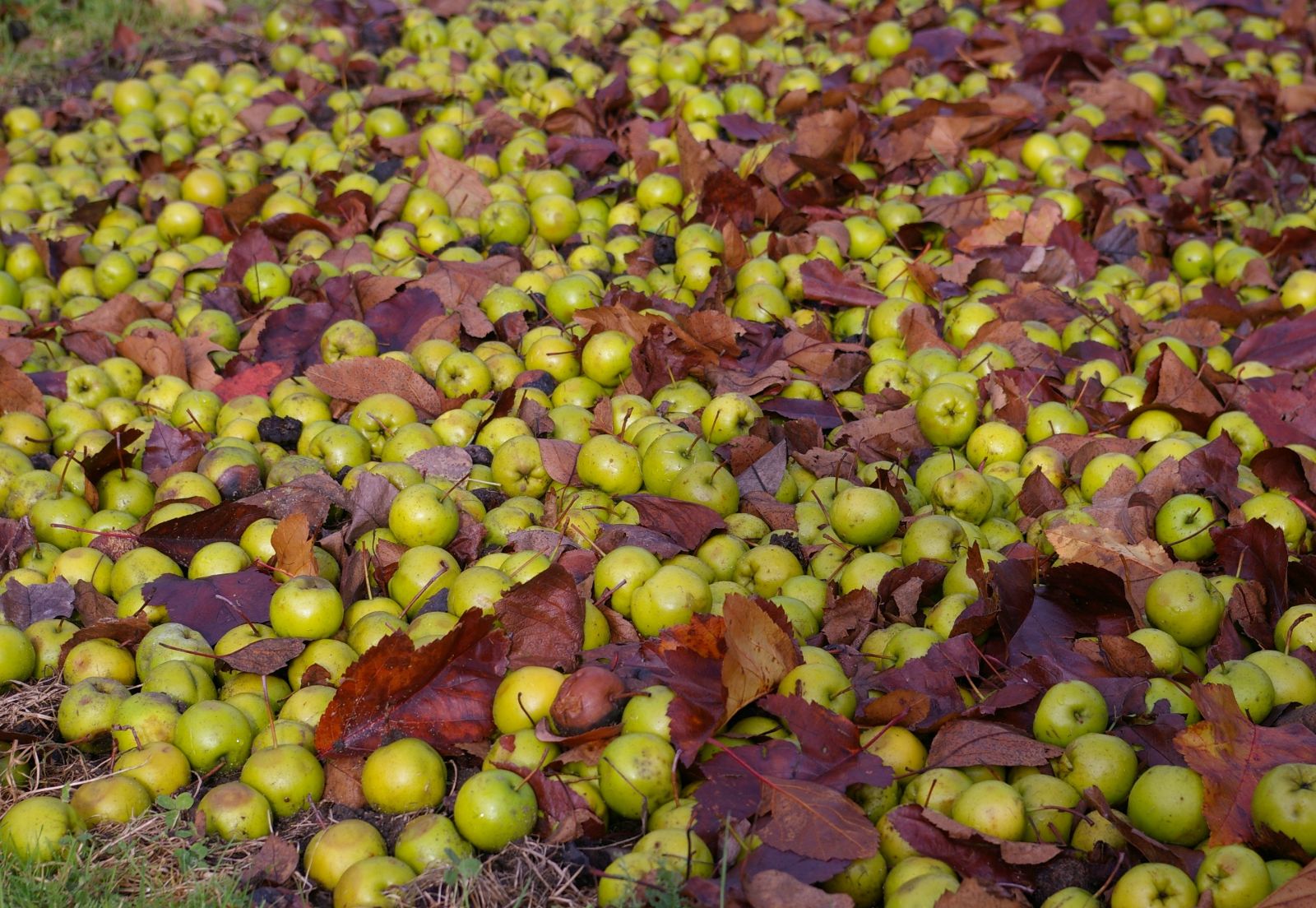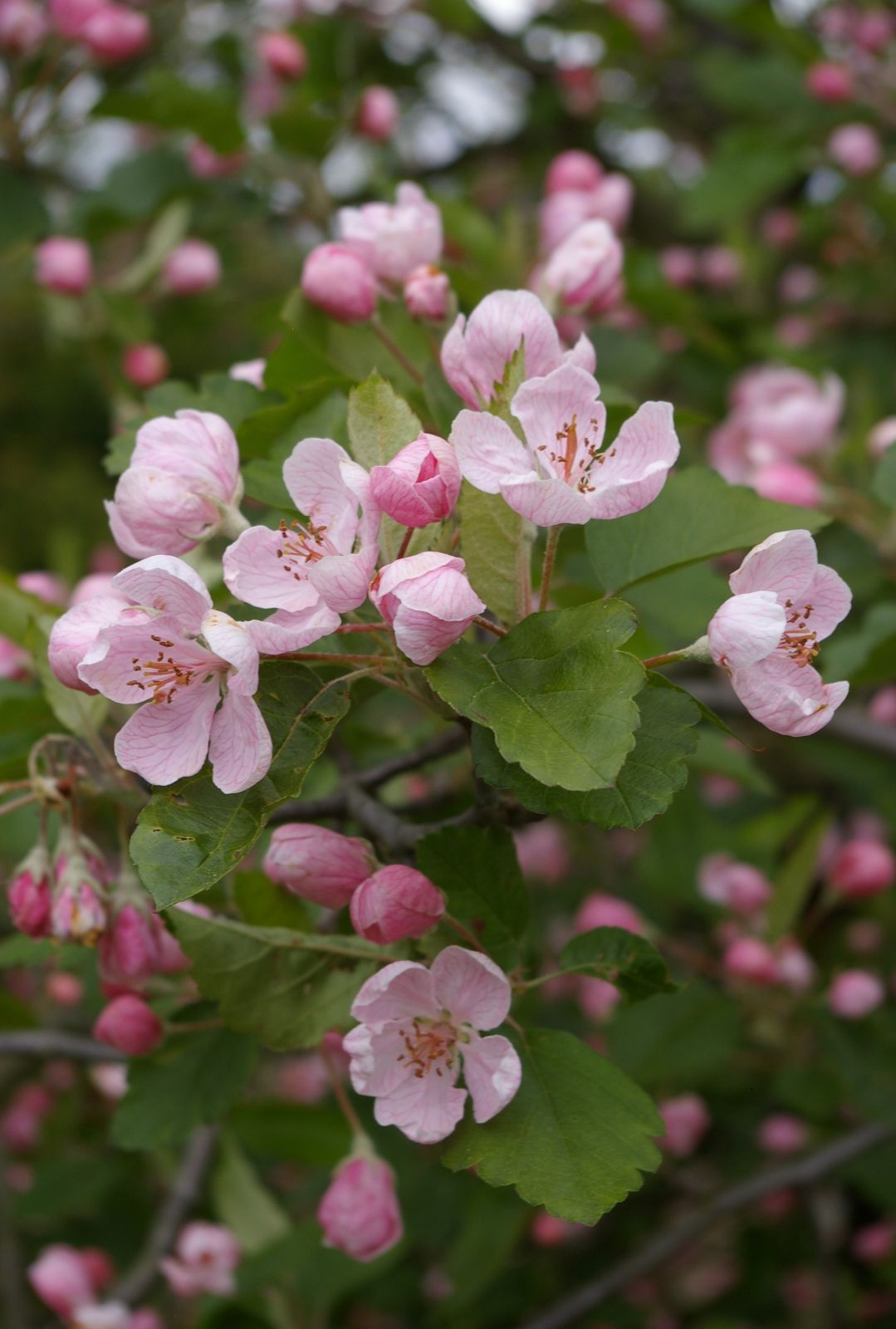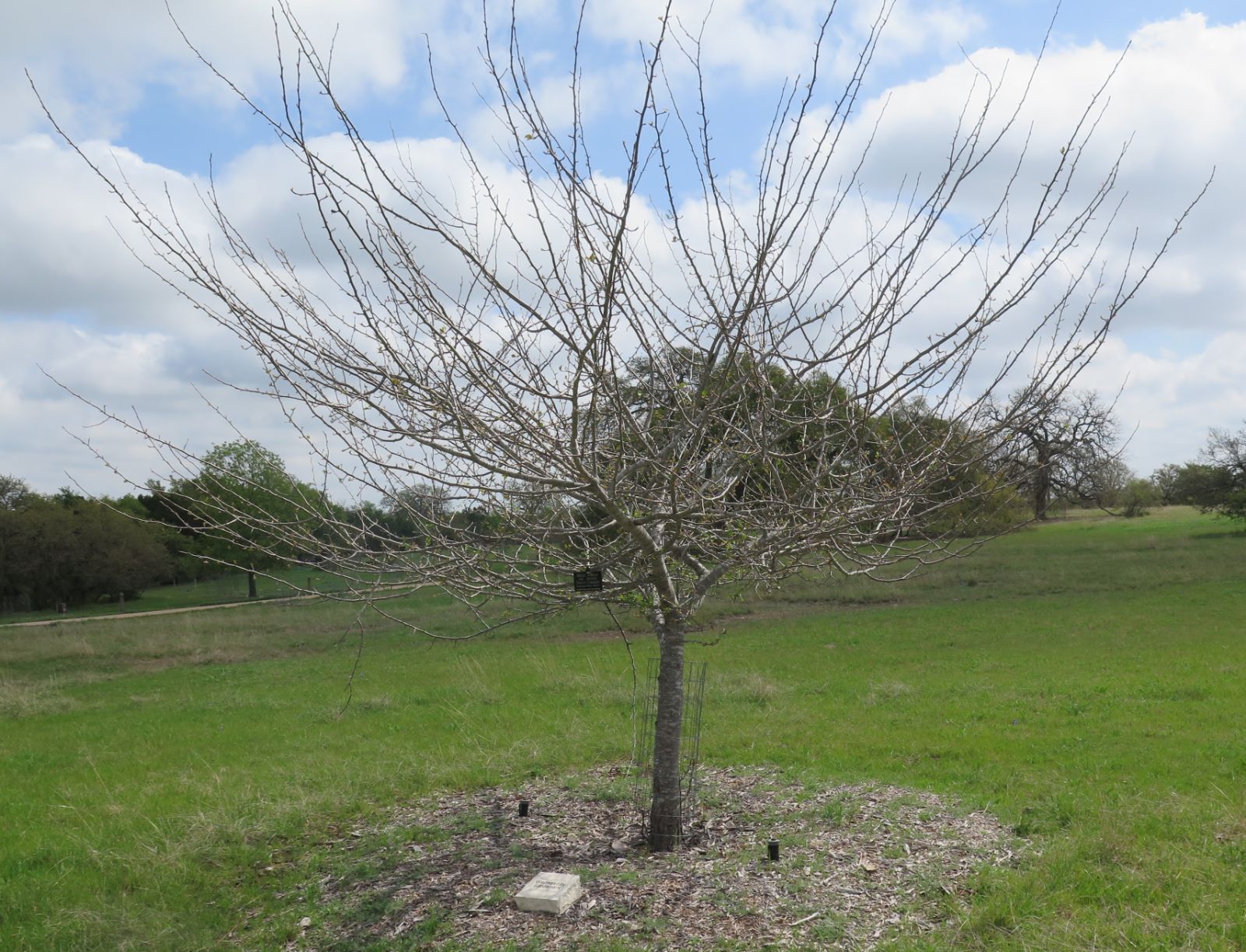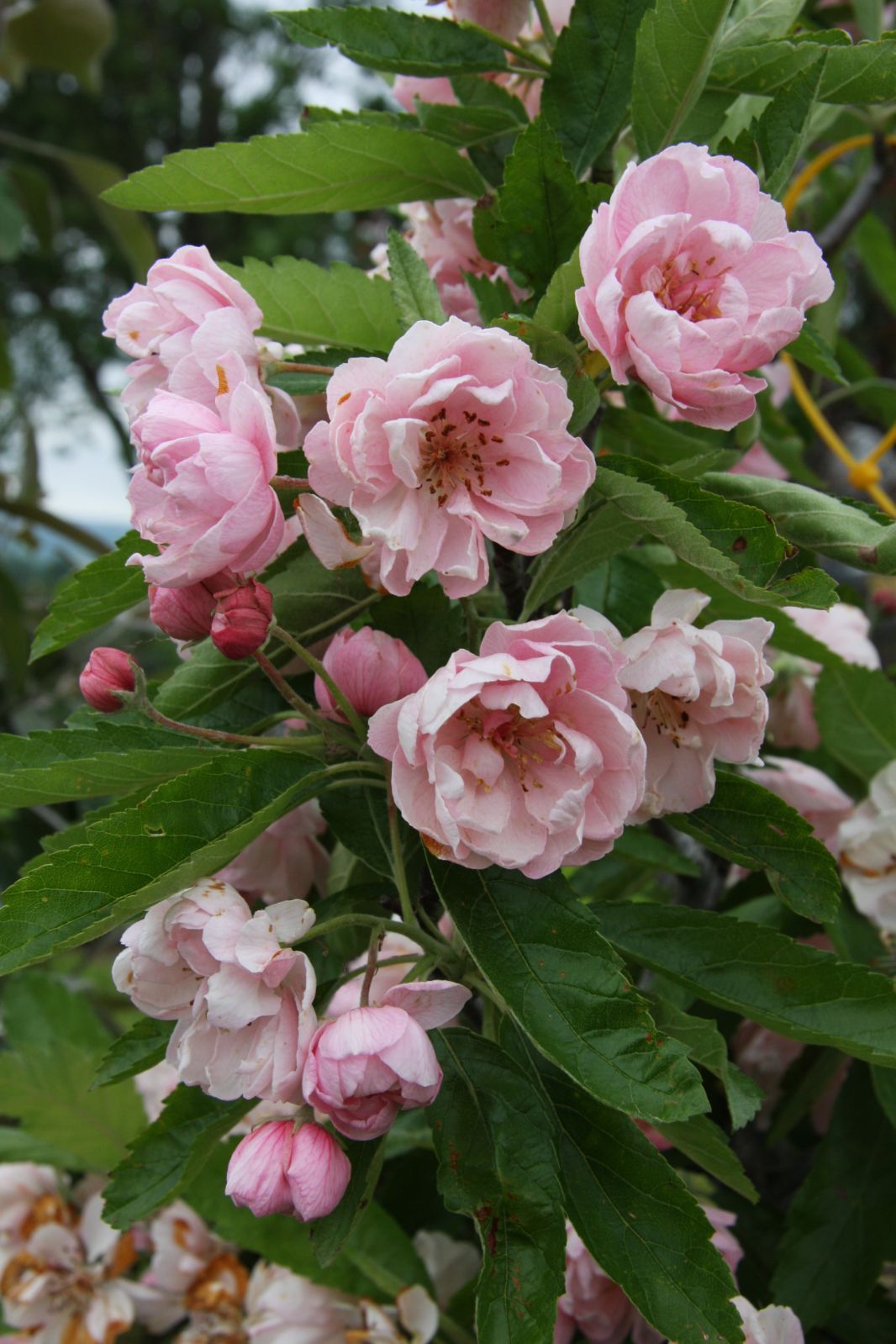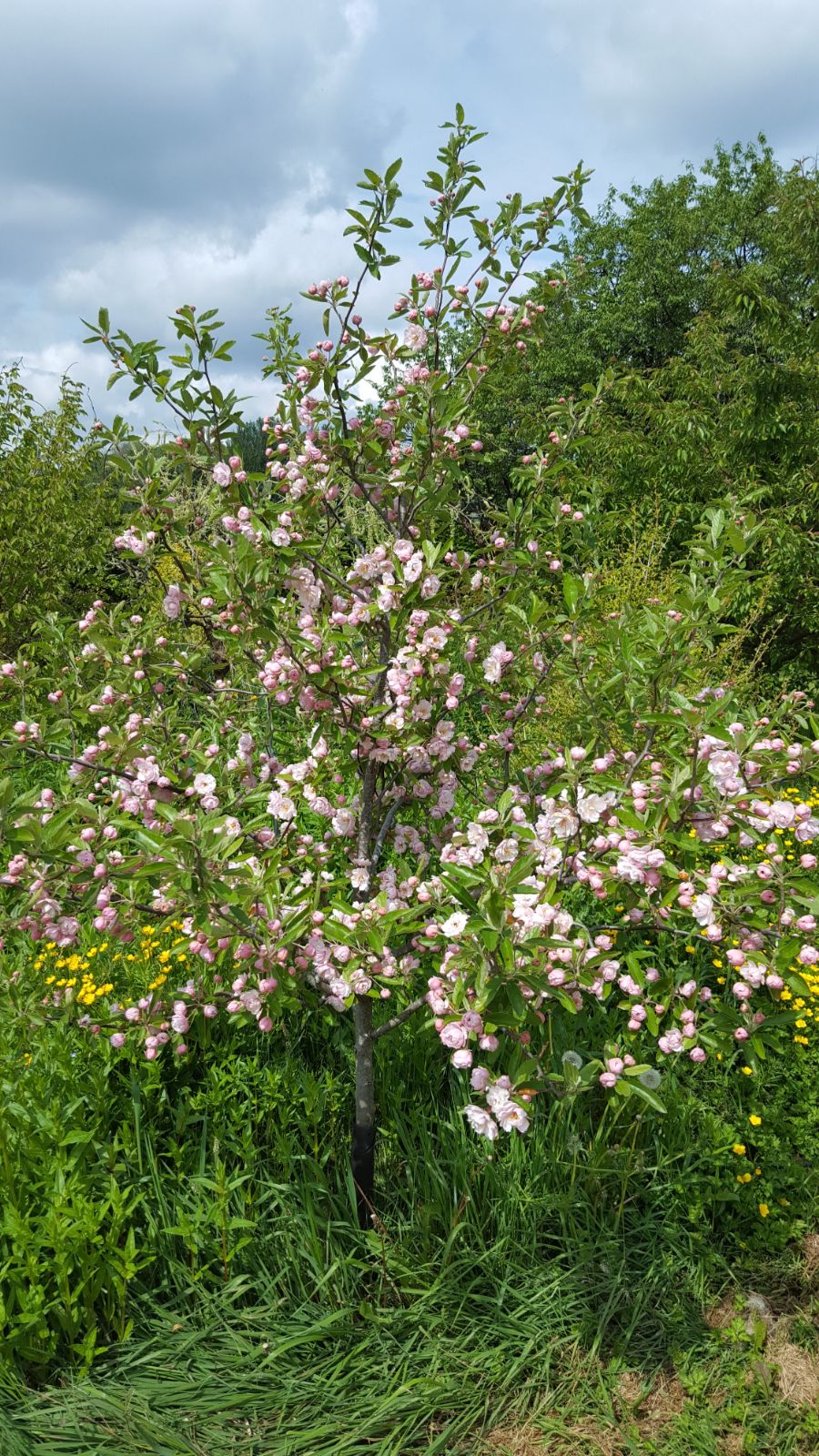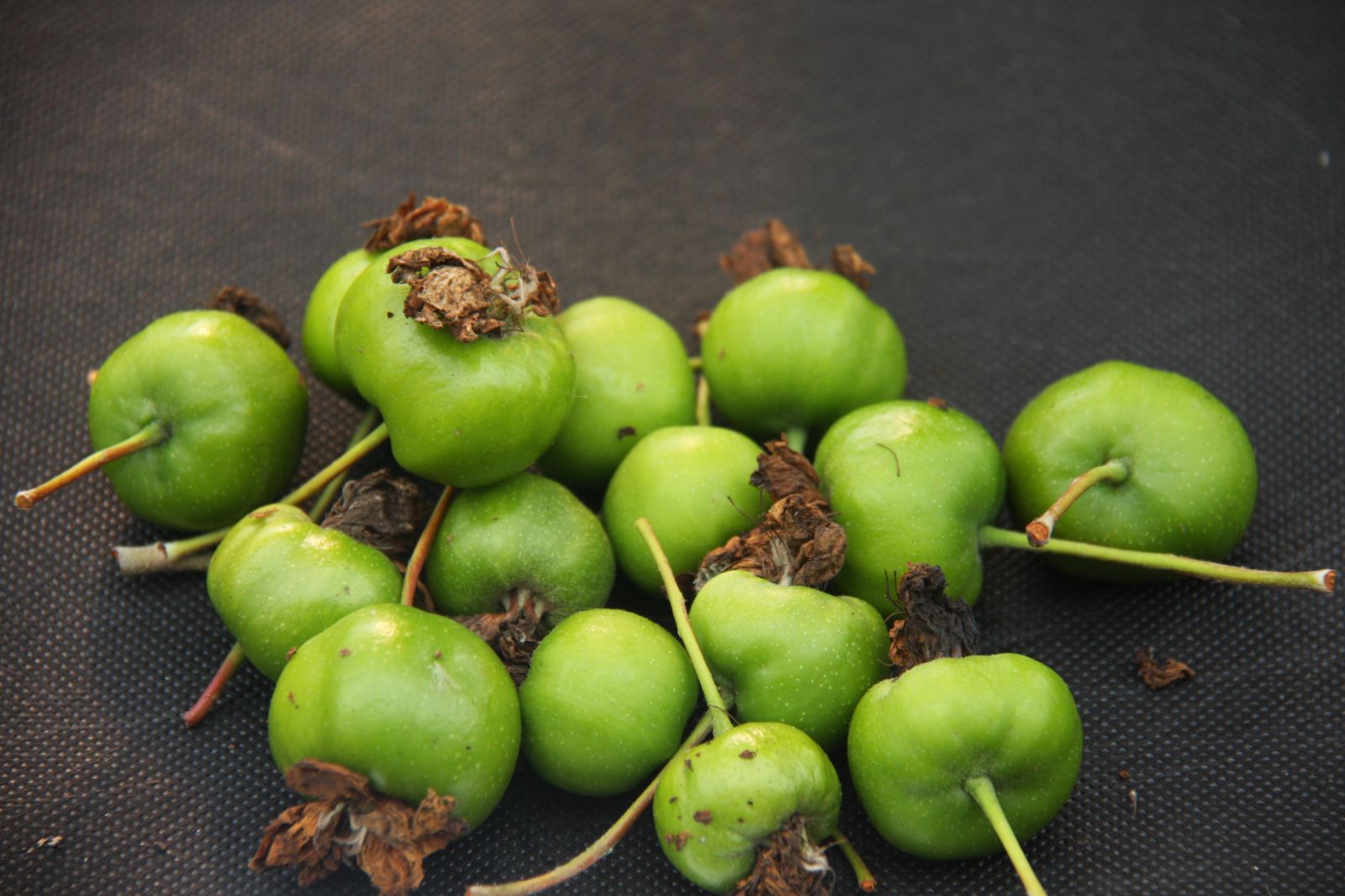Malus ioensis
Sponsor
Kindly sponsored by
Francine: 'after many informative Tours and Study Days with the IDS I feel it only fitting to help and promote such a wonderful organisation'
Credits
Julian Sutton (species), Nick Dunn (cultivars) (2021)
Recommended citation
Sutton, J. & Dunn, N. (2021), 'Malus ioensis' from the website Trees and Shrubs Online (treesandshrubsonline.
Genus
Common Names
- Prairie Crab
- Prairie Crabapple
- Iowa Crabapple
Synonyms
- Pyrus coronaria var. ioensis Alph. Wood
- Pyrus ioensis (Alph. Wood) Bailey
Infraspecifics
Other taxa in genus
- Malus × adstringens
- Malus angustifolia
- Malus × arnoldiana
- Malus asiatica
- Malus × astracanica
- Malus × atrosanguinea
- Malus baccata
- Malus bhutanica
- Malus × brevipes
- Malus chitralensis
- Malus coronaria
- Malus crescimannoi
- Malus Cultivars A-B
- Malus Cultivars C
- Malus Cultivars D-F
- Malus Cultivars G-I
- Malus Cultivars J-K
- Malus Cultivars L-M
- Malus Cultivars N-Q
- Malus Cultivars R
- Malus Cultivars S
- Malus Cultivars T-Z
- Malus dasyphylla
- Malus × dawsoniana
- Malus domestica
- Malus doumeri
- Malus florentina
- Malus × floribunda
- Malus fusca
- Malus × gloriosa
- Malus halliana
- Malus × hartwigii
- Malus × heterophylla
- Malus honanensis
- Malus hupehensis
- Malus kansuensis
- Malus kirghisorum
- Malus komarovii
- Malus × magdeburgensis
- Malus × micromalus
- Malus × moerlandsii
- Malus montana
- Malus ombrophila
- Malus orientalis
- Malus × platycarpa
- Malus praecox
- Malus prattii
- Malus prunifolia
- Malus × purpurea
- Malus × robusta
- Malus rockii
- Malus Rootstock Cultivars
- Malus Rosybloom Cultivars
- Malus × scheideckeri
- Malus sieversii
- Malus sikkimensis
- Malus × soulardii
- Malus spectabilis
- Malus spontanea
- Malus × sublobata
- Malus sylvestris
- Malus toringo
- Malus transitoria
- Malus trilobata
- Malus tschonoskii
- Malus turkmenorum
- Malus yunnanensis
- Malus × zumi
Small tree or shrub, (2–)4–6(–10) m, with thorn-like spurs. Bark dark red-brown to grey, with reddish scales. Branchlets reddish grey, hairy at first. Buds red-brown, ovoid, about 3–4 mm, scale margins tomentose. Leaves on vigorous shoots usually ovate, the blade 3–9(–12) × 1.5–4(–6) cm, base cuneate to rounded, margins lobed and variably toothed, apex acute to rounded, tomentose beneath, more or less glabrous above; petiole 15–30 mm, hairy. Flowering shoot leaves elliptic to ovate, and smaller, the blade 2–5 × 1–2 cm, only sometimes lobed, petiole 5–20 mm. Inflorescence a corymb of 4–6 flowers; peduncle absent; pedicels 1.5–3 cm, hairy. Flowers somewhat fragrant, 3.5–5 cm diameter, April to May in the wild; sepals triangular with acuminate apex, 3–7 mm, hoary on both surfaces, persistent; petals oblong to obovate, 14–20 mm, pink, sometimes ageing white; stamens 20, 8–16 mm, anthers pink before dehiscence; styles 5, 9–15 mm, more or less equalling the stamens. Fruit green or yellow, waxy, astringent, September to October in the wild; depressed-globose, 2–3 cm diameter, with erect sepals; stone cells abundant around the core. (Dickson 2015; Cullen et al. 2011; Bean 1981).
Distribution United States Great Plains: from South Dakota, Minnesota, Wisconsin and Michigan south to Texas and Louisiana.
Habitat Woods and diverse open habitats, including stream banks; 100–300 m.
USDA Hardiness Zone 2-8
RHS Hardiness Rating H6
Conservation status Least concern (LC)
The Prairie Crab belongs to the complex centred on Malus coronaria, intergrading and possibly hybridizing with that species (Dickson 2015). It differs from both M. coronaria and M. angustifolia in its leaves being persistently downy beneath; the branchlets are also conspicuously hairy. Increased hairiness is a frequent character in the westernmost forms of Eastern North American trees (Bean 1981): this might correlate with a drier climate. M. ioensis has a more westerly distribution than these other species, centred on the Upper Mississippi Valley and extending well across the Great Plains (Dickson 2015; Kartesz 2015). Alphonso Wood’s epithet (originally published as Pyrus coronaria var. ioensis, in 1861) indicates the state of Iowa, where it is native. While polyploids have been reported (Dickson 2015) it has been suggested that this is primarily a diploid, sexual species (Fiala 1994).
It is chiefly grown for its flowers, scented and usefully late. In older specimens the attractively peeling bark can be a bonus, and it is capable of good orange-red autumn colour (Edwards & Marshall 2019; Lady Bird Johnson Wildflower Center 2020). The small, astringent fruits were made into jelly and dried for winter use by the Meskwaki, who also used some part of the plant as a smallpox treatment in the 19th Century (Moerman 2020). Early settlers east of the Appalachians also made use of this hardy, deep rooting tree, making preserves and cider (Yatskievych 2013).
As a more western species, Prairie Crab reached European cultivation much later than its close relatives, being introduced to Kew only in 1906 (Elwes & Henry 1912). Unselected examples remain uncommon. In Britain there are two older specimens at Westonbirt, Gloucestershire (Forestry England 2020) and The Tree Register (2020) records of trees 4 and 5 m tall in two private Kent gardens. In Ireland a tree at the National Botanic Gardens, Glasnevin planted in 1969 was measured at 5 m × 42 cm in 2012 (The Tree Register 2020). There are specimens of wild origin at Gothenburg Botanic Garden, Sweden, and Meise Botanic Garden, Belgium, from 1989 and 2010 accessions respectively (Gothenburg Botanical Garden 2020, Meise Botanic Garden 2020).
In North America too it is not often grown, except as its cultivars (Jacobson 1996). There are several specimens of Illinois provenance at the Morton Arboretum, IL, and young trees of both Illinois and Iowa provenance at the Arnold Arboretum, MA (Morton Arboretum 2020, Arnold Arboretum 2020). The American champion, within its natural range at Callaway, MO, is far from shrubby, with a stout, curving trunk and spreading branches (7 m × 99 cm in 2010 – American Forests 2020).
Like M. coronaria, M. ioensis is susceptible to rust, although it is very resistant to scab (Dirr 2009). Cedar-apple rust (Gymnosporangium juniperi-virginianae) has Juniperus virginiana as an alternate host, and the two species should be well separated in North American plantings.
Where M. ioensis and M. domestica meet, the hybrid M. × soulardii (q.v.) may arise.
Cultivars of Prairie Crab have been selected for more intensely pink petals, for fimbriate petals, and for semi- or fully-double flowers. Some are far more commonly grown than the unselected species.
'Fimbriata'
A long-flowering double, with little or no fertile pollen, much more satisfactory than ‘Plena’.
Growth Rate / Size: Small (<4 m)
Form/shape/habit: Broadly spreading
Foliage: Lobed, good autumn colour
Flower colour: Pink
Flower size: Large (>4 cm)
Flower form: Densely double, with 25–34 petals, often fringed
Flower season: Late
Fruit size: Medium (<3 cm)
Fruit shape: Round, ribbed, often with brown calyx, can be misshapen
Fruit colour: Green
Fruit season: Mid
Disease resistance/susceptibility: Resistant
Parentage/origin: M. ioensis seedling
Raiser/collector: Bernard Slavin, Rochester, NY, USA
Date of introduction: 1931
(Description duplicated under Malus Cultivars D-F ‘Fimbriata’)
'Plena'
Common Names
Bechtel Crab
Synonyms / alternative names
Malus 'Bechtel'
Malus coronaria 'Plena'
An important old double-flowered variety, extremely widely planted in North America until the 1970s (Jacobson 1996) but performing poorly in Britain (Bean 1981). Effectively gone from the commercial trade on both sides of the Atlantic, but still a mainstream cultivar in Australia and New Zealand, it has been superseded by ‘Fimbriata’.
Growth Rate/Size: Large (>6 m)
Form/shape/habit: Open, rounded
Foliage: Green, lobed
Flower colour: Pink, with violet scent
Flower size: Large (>4 cm)
Flower form: Double, with 30–33 petals
Flower season: Late
Fruit size: Medium (<3 cm), few
Fruit colour: Green
Fruit season: Mid
Disease resistance/susceptibility: Highly susceptible
Parentage/origin: Wild find in Illinois, about 1840
Raiser/collector: E. A. Bechtel, IL, USA
Date of introduction: 1888
(Description duplicated under Malus Cultivars N-Q ‘Plena’)
'Prairie Rose'
Another double, very fragrant, deeper pink than ‘Plena’, and producing no fruit.
Growth Rate/Size: Medium to large (about 6 m)
Form/shape/habit: Upright
Foliage: Green
Flower colour: Deep pink
Flower form: Double (17–25 petals)
Flower season: Late
Disease resistance/susceptibility: Susceptible.
Parentage/origin: Open-pollinated M. ioensis (probably by M. ioensis ‘Plena’)
Raiser/collector: Agriculture Experiment Station, University of Illinois, USA
Date of introduction: 1956 by Simpson Nursery, IL
(Description duplicated under Malus Cultivars N-Q ‘Prairie Rose’)

